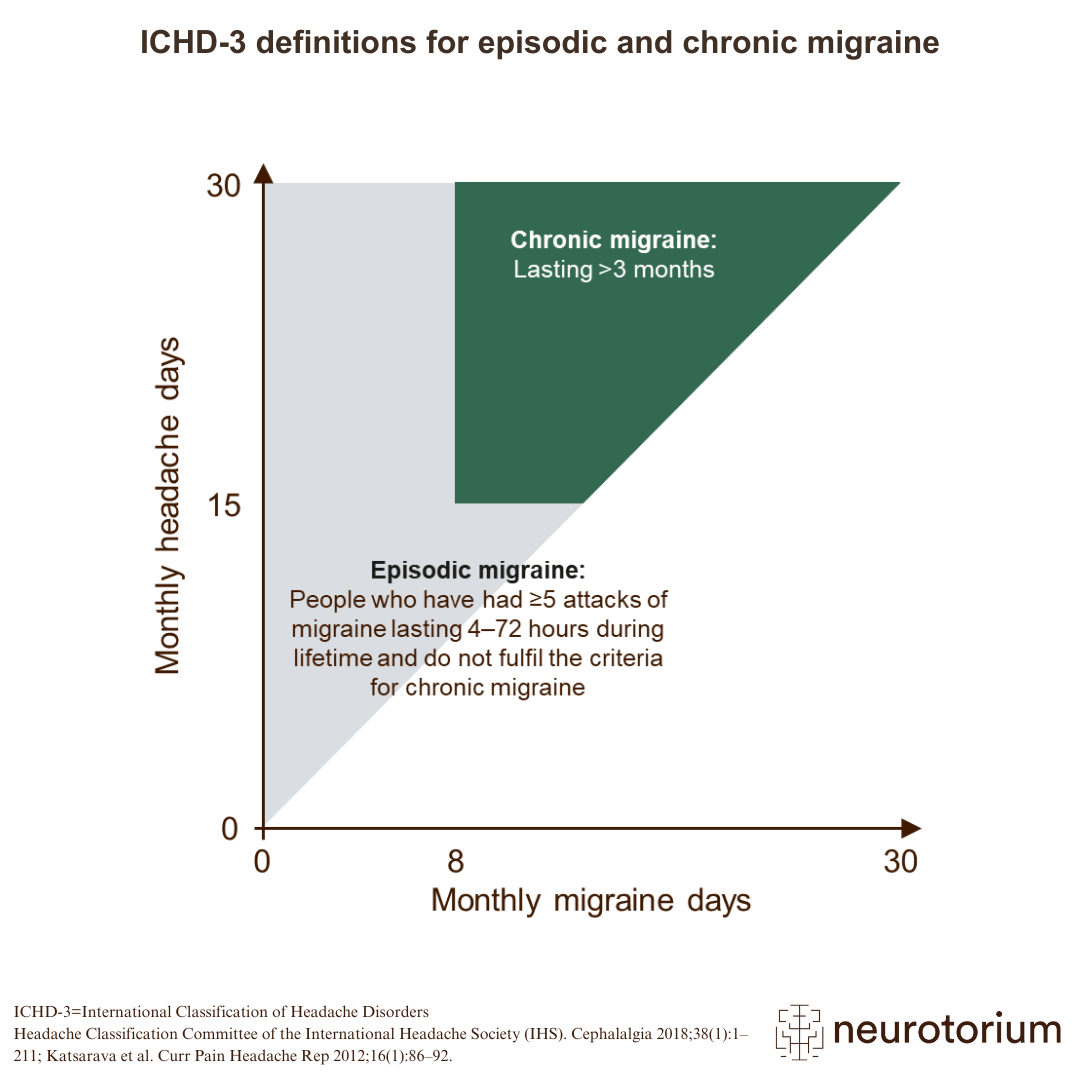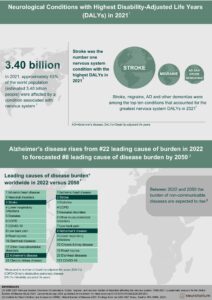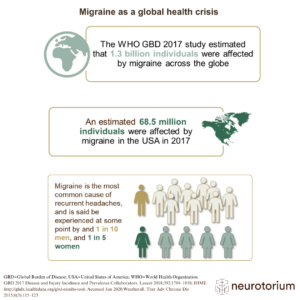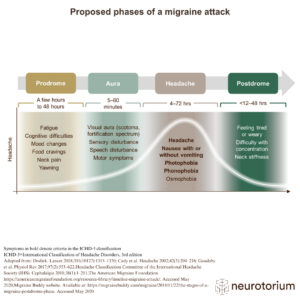The distinction between episodic and chronic migraine is made when a person crosses a threshold of 15 monthly headache days, 8 of which meet the criteria for migraine.1 The division between episodic and chronic is therefore based on the frequency of the migraine symptoms.1 People with chronic migraine typically have worse disease outcomes, a more severe disease, and greater use of healthcare resources.2
Access our slidedeck for insights into the History, Definitions, and Diagnosis of Migraine





